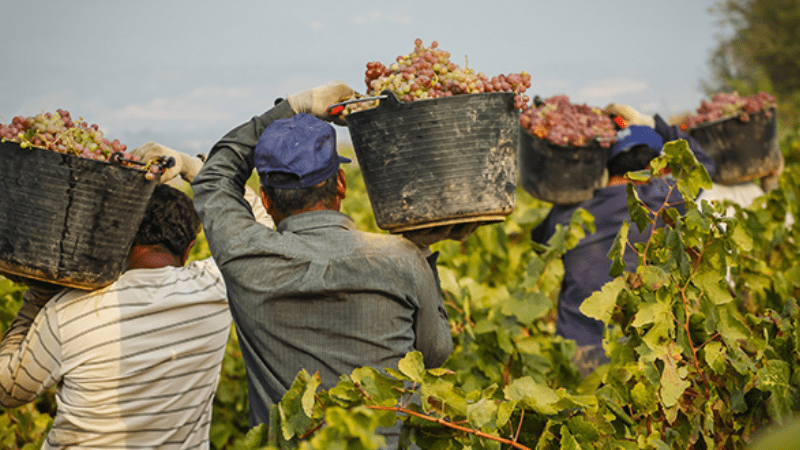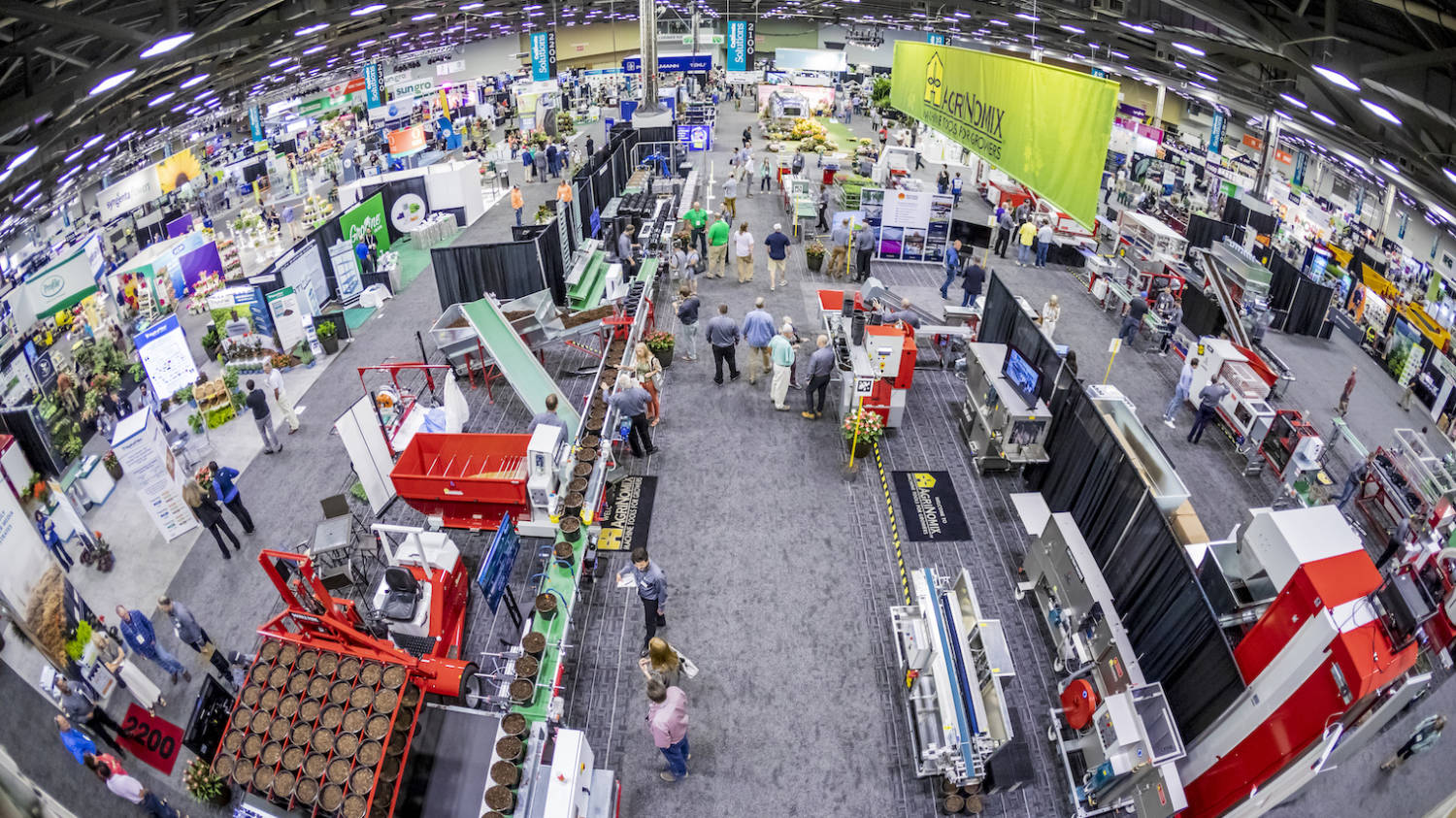
Labor logistics present a complicated puzzle
As amped-up enforcement of existing immigration policy and the creation of new regulations stoke uncertainty in the agricultural community, those closely monitoring the situation agree on one path to creating clarification: modernizing the country’s H-2A temporary agricultural worker program.
While the long-debated H-2A program is a separate issue from immigration reform, agricultural insiders say that updating the process to better document workers and meet the labor needs of farmers could help protect a U.S. agriculture industry that relies heavily on immigrant labor. According to the USDA’s Economic Research Service, immigrant farmworkers make up an estimated 73% of agricultural workers in the country.
The H-2A program has roots dating back nearly 75 years and is designed to help U.S. farmers and ranchers fill labor gaps in seasonal or temporary agricultural jobs plagued by a shortage of domestic workers. But some say the program needs significant reform in order to fulfill that function with foreign workers whose presence in the country is legal and trackable.
HISTORY OF HELP
The U.S. has a long history of hiring foreign workers for agricultural work, largely from Mexico, dating back to the Bracero Program in 1942. Established by an executive order called the Mexican Farm Labor Program, the series of accords permitted millions of Mexican farmworkers to work in the U.S. on short-term labor contracts.
The Immigration and Nationality Act of 1952 established the H-2 non-immigrant visa program, which admitted foreign workers to the U.S. to perform temporary and seasonal employment. In 1986, the Immigration Reform and Control Act amended that legislation to separate the H-2 visa program into H-2A for agricultural workers and H-2B for non-agricultural workers.
The amendment aimed to provide better oversight of the influx of foreign farmworkers — who made up the majority of the 30,000 or so seasonal or temporary workers in the country at the time — while also protecting wages and working conditions of domestic workers. In 1987, the Department of State issued 44 visas for H-2A workers. In 2020, it issued 213,000.
The H-2A program is administered by the Departments of Labor, Homeland Security and State. U.S. employers can apply to sponsor foreign workers for less than a year if employers can demonstrate a lack of domestic workers for agricultural jobs.
Program workers must be paid the highest of three wages: the Adverse Effect Wage Rates (AEWR), the federal or state minimum wage, or the “prevailing wage,” ordinarily the local median wage for a particular job. AEWR is the regional weighted average hourly wage rate for field and livestock workers combined as measured by the USDA’s annual Farm Labor Survey of nonsupervisory farm workers.
Hourly rates for workers performing agricultural labor from sorting to packaging to operating equipment vary by state. As of December 2024, top rates in the nation’s leading potato-producing states included $19.82 in Oregon and Washington, and $19.97 in California. On the lower end of the scale, workers made $16.83 per hour in Idaho and Montana.
 ATTEMPTS AT REFORM
ATTEMPTS AT REFORM
Since its inception, there have been several attempts at modernizing the H-2A program. In 2008, a rule was instituted to provide employers “a suitable and timely flow of legal workers,” with the intent to lessen dependency on unauthorized migrants by decreasing the waiting period migrants had to complete outside the U.S. before they could be granted a renewed H-2A status.
Federal rules also established new program requirements, including regulations prohibiting employers from taking money from prospective H-2A workers as a condition of obtaining employment and limiting participation to nationals of designated countries. In following years, rules were introduced related to employer paperwork requirements, including a mandate that employers file a labor certification application at least 45 days before a foreign worker is needed.
In 2009, Congress attempted to overhaul the program by streamlining worker recruitment, making changes to minimum wage requirements and providing a legalization program for foreign agricultural workers. The bill, which failed several attempts to pass through Congress, would also have adjusted the AEWR and allowed employers to provide housing allowances in lieu of providing housing, among other reforms.
In 2013, another push to reform the program came in the form of an immigration modernization act that would have created a new temporary agricultural worker visa and phased out H-2A. The bill would have allowed workers illegally present in the U.S. a chance to obtain a temporary visa as workers under a new H-2C classification for agricultural workers. This move was part of changes meant to reduce obstacles in hiring foreign workers and protect farmers from litigation over abusive practices.
In March 2021, the U.S. House passed the Farm Workforce Modernization Act of 2021, which would have provided a path to legal status for undocumented workers who cleared background and security checks. The act, which would also make the program more responsive and address year-round labor needs, was reintroduced in July 2023.
In 2023, changes to the way AEWR is calculated, including a stipulation that workers doing different jobs must be paid the highest-level wage for the job classification, were met with criticism from agricultural organizations, including the International Fresh Produce Association.
“The H-2A program is unaffordable, ineffective and out of date, and these program changes make it even more difficult for our members to find the workers they need,” IFPA CEO Cathy Burns said in a statement. “This is why Congress must act to pass agricultural immigration reform now. America’s agricultural producers simply cannot wait any longer.”
The California Farm Bureau renewed calls for immigration reform and H-2A modernization in a statement issued Jan. 30 while also cautioning against indiscriminate enforcement actions that threaten workforce stability.
“We need policies that offer real solutions, rather than uncertainty,” Bryan Little, the bureau’s senior director of policy advocacy, said in the release. “It’s like pulling the foundation out from under a house. If we want a strong agricultural economy and a secure food supply, we need solutions that reflect the reality of farming — not blanket enforcement measures that put the entire agricultural system at risk.”
IMMIGRATION UNCERTAINTY
In his first few weeks in office, U.S. President Donald Trump issued several directives to increase immigration enforcement. Among them, he directed Immigration and Customs Enforcement (ICE) to expand use of expedited removal, or deportations allowed to bypass immigration courts, and revoked a policy prohibiting ICE agents from making arrests in “sensitive locations” such as churches, schools and hospitals. He also signed the Laken Riley Act, directing ICE to detain and deport immigrants charged with — not convicted of — certain crimes.
The crackdown has sparked reports of fear amid the farmworker community, including in California, where more than half of the state’s estimated 162,000 farmworkers are undocumented, according to the Labor Department’s National Agricultural Workers Survey.
While acknowledging news reports of “unease among some farm employees” in its Jan. 30 statement, the California Farm Bureau said it “has been in contact with numerous farmers across the state and has not heard of any widespread workforce disruption.”
“We recognize that some workers may feel uncertain right now, and we want to be very clear: California agriculture depends on and values its workforce,” Little said in the statement. “Farm employees are not just workers — they are partners in this industry.”
Little called for changes to immigration policy to address chronic labor shortages and make the H-2A program more responsive to the needs of employers, along with earned legal status for current agricultural workers.
TARIFF TURMOIL
Another uncertainty facing U.S. agriculture at the start of Trump’s second term has been tariffs.
On Feb. 3, Trump paused an announced 25% tariff on goods from Canada and Mexico, which fully opened its market to U.S. fresh potato exports in 2022 after 25 years of legal wrangling, for 30 days. In late February, he vowed to impose those tariffs beginning March 4.
A 10% tariff on Chinese goods went into effect Feb. 4. China responded by levying a 15% tax on certain types of coal and liquefied natural gas, and a 10% tariff on crude oil, agricultural machinery, large-displacement cars and pickup trucks from the U.S.
Trump began investigating reciprocal tariffs in mid-February, which could affect major trading partners, including Canada, Mexico, China, the EU and Japan. Used to encourage domestic sales by making imports more expensive, to raise revenue and as bargaining tools in trade deals, tariffs are paid by importing companies. Higher costs can be passed on to consumers through higher prices. Analysts warn that new tariffs could push U.S. inflation from 2.9% to 4%.









 Video Library
Video Library 


















